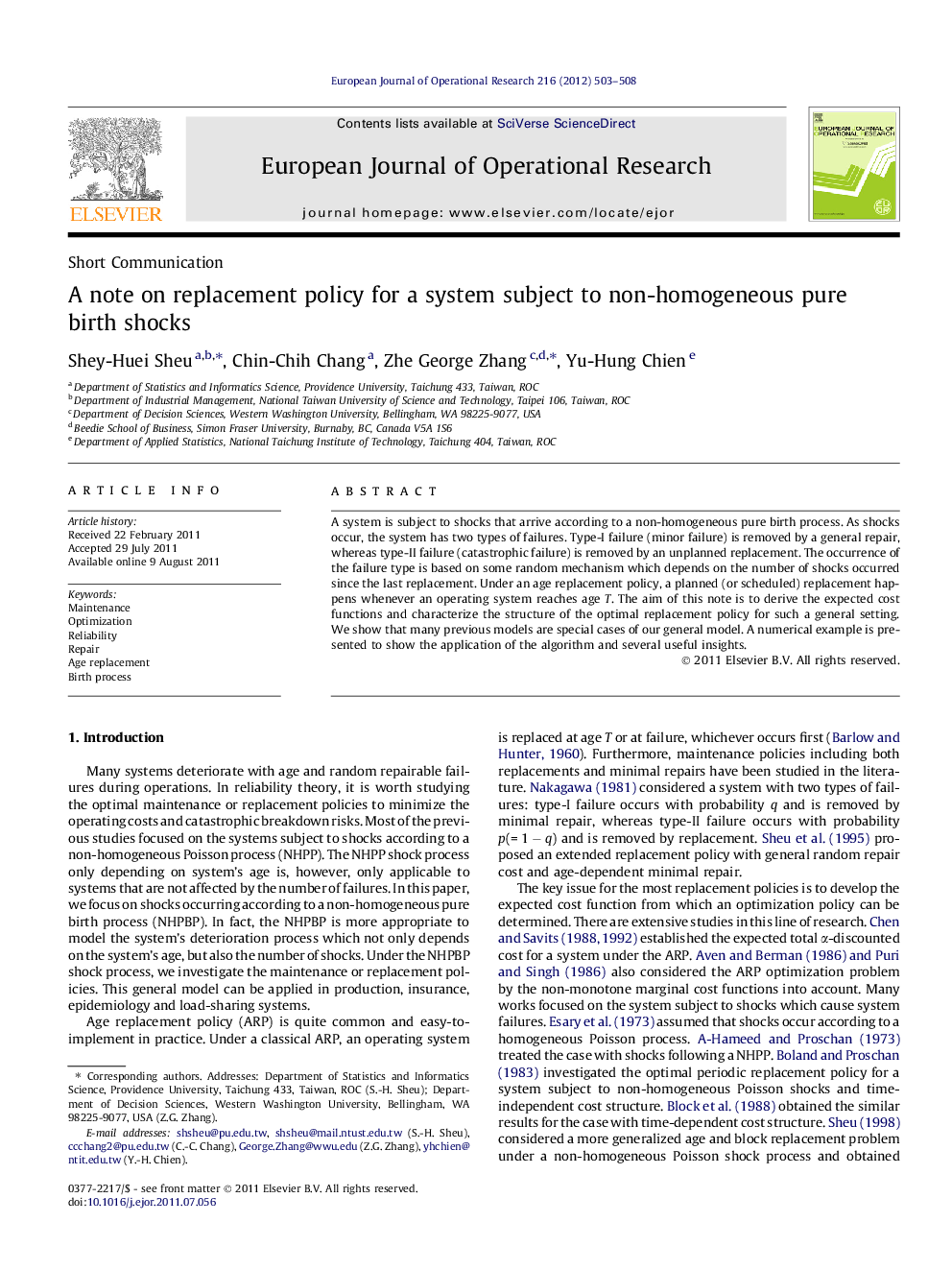| Article ID | Journal | Published Year | Pages | File Type |
|---|---|---|---|---|
| 480189 | European Journal of Operational Research | 2012 | 6 Pages |
A system is subject to shocks that arrive according to a non-homogeneous pure birth process. As shocks occur, the system has two types of failures. Type-I failure (minor failure) is removed by a general repair, whereas type-II failure (catastrophic failure) is removed by an unplanned replacement. The occurrence of the failure type is based on some random mechanism which depends on the number of shocks occurred since the last replacement. Under an age replacement policy, a planned (or scheduled) replacement happens whenever an operating system reaches age T. The aim of this note is to derive the expected cost functions and characterize the structure of the optimal replacement policy for such a general setting. We show that many previous models are special cases of our general model. A numerical example is presented to show the application of the algorithm and several useful insights.
► A system is subject to non-homogeneous pure birth process shocks. ► Two types of failures are removed by a general repair or replacement. ► The expected cost functions are derived. ► Optimal policy structure is characterized. ► Previous models are special cases of our general model.
